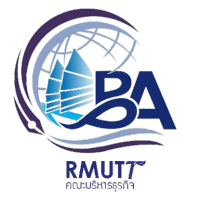RISK ASSESSMENT OF CHEMICALS LEAKAGE IN STORAGE TANK: A CASE STUDY OF FACTORY IN SARABURI PROVINCE
Keywords:
Risk Assessment, Chemicals Leakage, Saraburi ProvinceAbstract
This article aimed at analyzing and identifying the hazards by assessing the risk of chemical spills of a plant in Saraburi. The data had been correct through the Walk-Through Survey technique and related study, document and research. The fault tree analysis (FTA) and risk assessment had been employed to analyze the data and recommend the guidance of reducing the risk and potential hazards. The results showed that the cause of chemical leakage was from the operation and the damage of the tanks, chemicals and components. In addition, causes from operation can also be divided into 2 sub-causes that can lead to chemical leaks, these can include operational standards and workers’ understanding toward the correct practice of chemicals. Therefore, the preventive and corrective approach for this study consists of 3”E” engineering principles. Firstly, the engineering approach is necessary to assess the risk when changes or related activities occur in the work process. Secondly, the education approach has shown that there is a need to provide training program in enhancing the worker’s understanding towards the hazardous chemical usage. Lastly, the enforcement is defined as a standard of safe operation, including control measures forcing worker to strictly follow.
References
Bunprom, P., & Thirawanutpong, P. (2013). Risk Assessment of Chemical Effect to Health and Safety. Engineering Journal of Siam University, 15(27), 33-44
Chuenbarn, S., & Hansupalak, N. (2012). Hazard Identification in a Tube Dryer in Tapioca Starch Production Process Using Fault Tree Analysis and Risk Assessment. Kasetsart Engineering Journal (Thailand), 80(25), 39-50.
Dapthuk, N. (2014). Risk Assessment of Securing Material in Natural Gas Exploration and Production for Road Transportation. Thesis, Master’s Degree in Safety Engineering. Kasetsart University.
Department of Industrial Works. (2003). Regulations of Department of Industrial Works on Hazard Identification Criteria, Risk Assessment, and Risk Management Plan. (BE 2543). Ministry of Industry, Bangkok.
Husin, S. N. H., Mohamad, A. B., Abdullah, S. R. S., & Anuar, N. (2012). Chemical health risk assessment at the chemical and biochemical engineering laboratory. Procedia-Social and Behavioral Sciences, 60, 300-307.
Mongkoltae, W., Sudsakorn, K., & Srinophakun, T. (2009). Risk assessment using fault tree analysis in the aluminium molding process. Kasetsart Engineering Journal (Thailand), 69(22), 47-55.
Petsungnern, J., Liphun, S., Anothaiaungrat, S., & Piyamongkala, K. (2016). Hazard Identification in Laboratory Chemistry: Case Study of Laboratory Industrial Chemistry. DU Research Journal sciences and technology, 9, 21-33.
Rukkhamon, T., Thongyai, S., & Maneelok, S. (2013). Risk assessment of leakage of ammonia from storage tanks in frozen seafood factories. Ladkrabang Engineering Journal, 30(1), 67-72.
Shao, H., & Duan, G. (2012). Risk quantitative calculation and ALOHA simulation on the leakage accident of natural gas power plant. Procedia Engineering, 45, 352-359.
Simachokedee, W., & Chalermjirarat, W. (2007). Engineering and Plant Safety Management (18th Edition). Bangkok: Technology Promotion Association (Thailand-Japan).
Vichien, O., & Karnchana, R. (2012). The technical application of Fault Tree Analysis (FTA): A case study of metal press station. Journal of Engineering, RMUTT, 1, 1-11.








